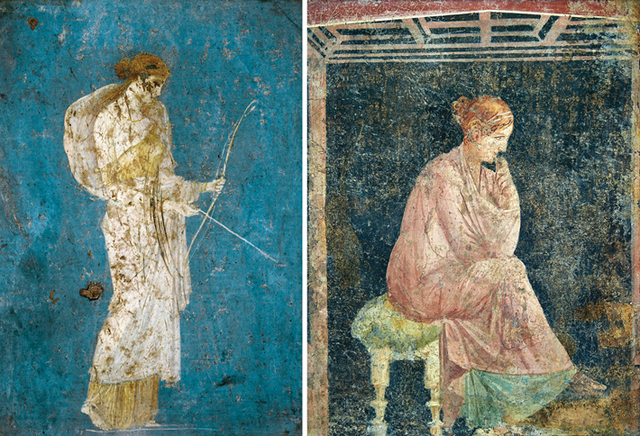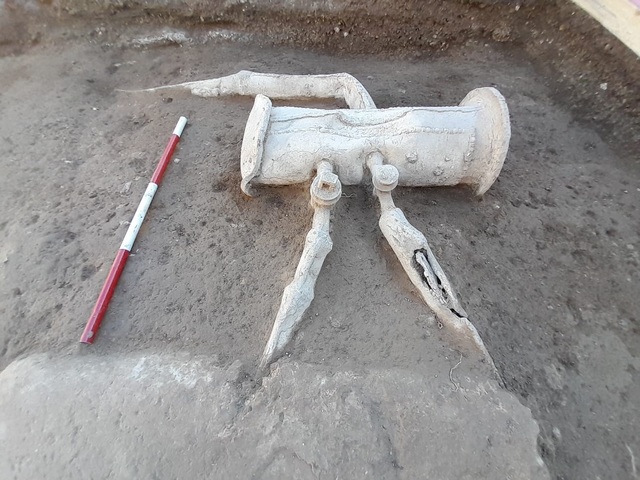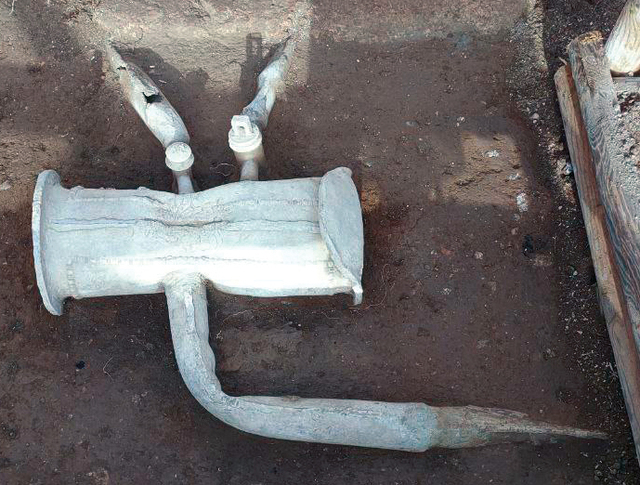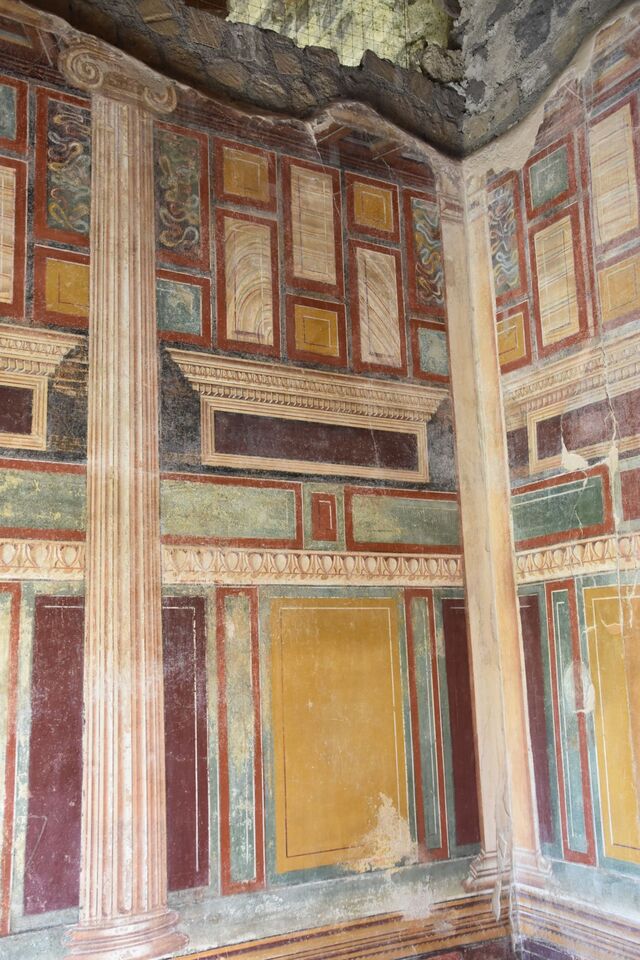Hidden beneath the volcanic ashes of Mount Vesuvius for centuries, Villa Arianna’s well-preserved water system has finally been uncovered, revealing the sophistication of ancient Roman engineering. Archaeologists recently uncovered a lead water tank with intricate pipes and stop keys, offering a rare glimpse into how the elite Romans of Stabiae lived. This discovery not only sheds light on the daily luxuries enjoyed by the wealthy but also demonstrates the Romans’ remarkable mastery over water management, blending function and artistry seamlessly.
Villa Arianna: A Wealthy Roman Enclave
Stabiae, like its neighboring cities of Pompeii and Herculaneum, met its tragic end in 79 A.D. when Mount Vesuvius erupted, burying much of the region under a thick layer of volcanic ash. However, unlike the more widely known Pompeii, Stabiae was an exclusive enclave for the Roman elite. Villas here were larger, more opulent, and catered to the wealthiest of Roman aristocrats. Built on the slopes of a hill with stunning views of the Bay of Naples, these villas were dedicated to the Roman concept of otium—leisure and relaxation.

Villa Arianna, the oldest mansion in Stabiae, is a prime example of such a luxurious estate. The villa, covering over 27,000 square feet, is decorated with intricate frescoes, mosaics, and beautiful architectural elements. Its oldest areas date back to the late Republican period, while the most recent additions were made in the Flavian era. The villa’s artwork, including exceptionally rare frescoes from the early 1st century B.C., exemplifies the rich cultural and artistic life enjoyed by the villa’s residents. The presence of running water, lavish gardens, and opulent interiors would have made this residence the ultimate retreat for the Roman elite.

Video
Watch the video for a historic tour of little-known Pompeii sites, including villas, farms, and museums. Discover hidden gems that most visitors miss!
The Discovery of the Water Tank and Its Significance
In 2022, while refurbishing the Villa Arianna as part of ongoing excavation efforts, archaeologists uncovered a remarkably well-preserved section of the villa’s water system. This discovery included a large lead tank, intricately designed with conduits to regulate the flow of water. The tank, still in situ, was used to manage water distribution throughout the villa. What makes this find truly exceptional is not only its pristine condition but also the two stop keys still in place, allowing for the regulation of water flow or complete shutdowns for maintenance.

This discovery is significant as it provides insight into the advanced plumbing and water management systems that the Romans used to ensure the comfort and luxury of their domestic spaces. For centuries, historians and archaeologists have marveled at Roman engineering, particularly their ability to control water—both for public utilities and in private homes. Villa Arianna’s water system, complete with its lead tank and stop keys, is a testament to the ingenuity of Roman engineers who designed highly functional systems to meet the needs of the elite.
The Roman Water System: Innovation and Functionality
The water system uncovered at Villa Arianna is a small but crucial component of the Roman understanding of water distribution. The large lead tank served as the heart of the system, with pipes leading to various parts of the villa. From here, water would be channeled into different rooms, ensuring that the villa’s inhabitants had access to fresh water whenever they required it. This system is remarkably modern in its design, featuring stop keys that allowed for the control and regulation of water flow. The tank was not only functional but also strategically placed above floor level to make maintenance easier, demonstrating the Romans’ thoughtful approach to ensuring long-term durability.

The use of stop keys for water regulation was a notable innovation. These keys would allow the villa’s inhabitants to turn the water supply on or off, a feature that would have been invaluable for ensuring that water was used efficiently throughout the villa. The presence of such systems reflects a society that was not only concerned with luxury but also with the sustainability and maintenance of their resources. It was also a demonstration of how Roman engineering, although ancient, contained features that seem almost modern in their approach to utility management.
Detailed Features of the Tank and Its Decoration
The tank itself is not just a functional object; it also features decorative elements that are characteristic of Roman artistic practices. A notable aspect of the water tank is the relief of an astragalus plant, a decorative motif that likely indicated the workshop or the craftsman responsible for its creation. This decorative touch highlights the Romans’ desire to integrate ornamentation into even the most utilitarian objects, transforming everyday items into works of art.

The ornamental relief, visible because the tank was placed above the floor level, serves as a form of signature craftsmanship, much like a modern brand. It is fascinating to think that something as practical as a water tank could also serve as a canvas for artistic expression. This combination of function and decoration is one of the hallmarks of Roman luxury, where beauty and utility were often intertwined.
The Role of Water in Roman Domestic Life

In Roman culture, water was not just a resource but a symbol of status and luxury. Wealthy Romans, such as those residing in Villa Arianna, had access to running water, fountains, and private baths, all integral parts of Roman leisure and luxury. Villas like Villa Arianna were equipped with sophisticated water systems that fed into private pools, bathhouses, and decorative fountains.
The concept of water management extended beyond practicality. It was a way to display power, wealth, and the ability to create a comfortable lifestyle. Villa Arianna’s advanced water system, complete with a lead tank and flowing pipes, would have allowed its residents to enjoy constant access to water for their baths, fountains, and gardens. The presence of these features not only made life more comfortable but also emphasized the villa’s status as a luxurious retreat for the Roman elite.
The Eruption of Vesuvius and the Preservation of Villa Arianna
Despite the villa’s opulence, its residents met their tragic fate in the eruption of Mount Vesuvius in 79 A.D., which also buried Pompeii and Herculaneum. Unlike its neighboring cities, however, Stabiae was not immediately excavated, and much of its grandeur remained hidden beneath layers of volcanic ash until more recent excavations. The eruption, while devastating, also played a pivotal role in preserving the villa and its features for future generations to study.
The preservation of Villa Arianna’s water system, including the lead tank and its associated pipes, provides a unique opportunity to understand Roman engineering. The exceptional condition of the villa’s plumbing systems gives archaeologists a rare glimpse into how the Romans designed their homes to be self-sufficient, with a focus on comfort, luxury, and practicality.
Video
Watch the video to explore the Roman water supply system in Strip the City. This fascinating look into ancient engineering reveals how the Romans revolutionized water distribution!
Conclusion
The discovery of the lead water tank at Villa Arianna is a significant addition to our understanding of Roman life. It provides insight not only into the technological advancements of the time but also into the daily lives of the wealthy elite. The sophisticated water system, combined with the luxurious frescoes and mosaics found at the villa, offers a rare and valuable glimpse into the world of Roman leisure and opulence. As archaeologists continue to uncover more about Villa Arianna and other villas in Stabiae, these findings will undoubtedly contribute to our understanding of Roman engineering, domestic life, and the enduring legacy of Roman culture.



